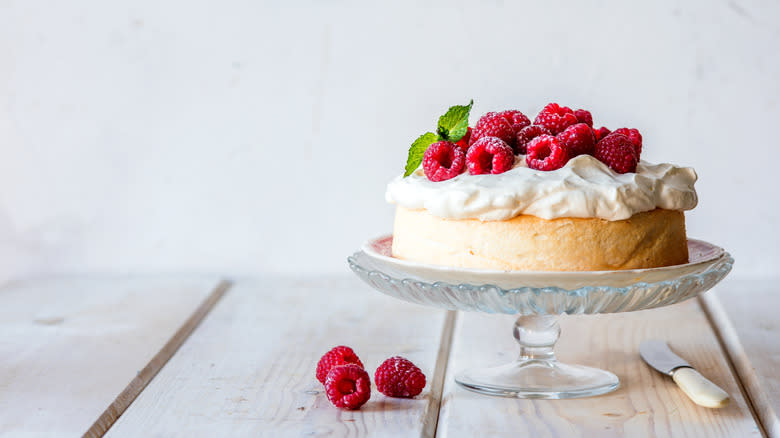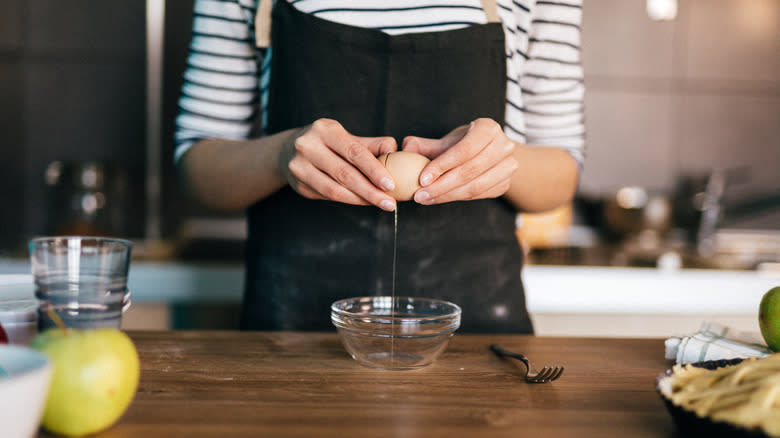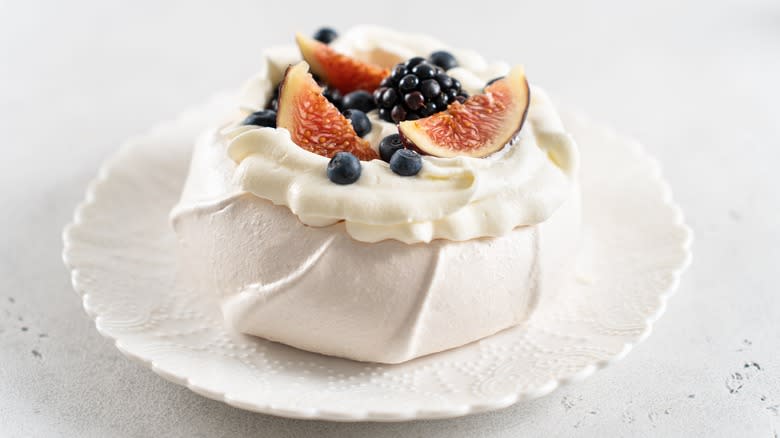The Science Behind How Egg Whites Toughen Up Cake Batter

Every home baker knows the importance of using certain key ingredients to ensure the best results. When it comes to making cake batter specifically, the thing you definitely shouldn't skip is egg whites. This seemingly simple ingredient plays many different roles, but an important one is that it toughens up cake batter by adding the heft needed for its structure to form.
Egg whites work well in many situations. In fact, you may not have known that all you need for the crispiest roasted potatoes are egg whites! However, they are especially important when it comes to baking. Another cool part about working with egg whites is that you could actually freeze your egg whites to use for later. Now that you are aware of their importance, you may be wondering about the science behind their role in toughening up cake batter. Let's dive into this fascinating subject, so that when you put on your baking hat next time, you are well-equipped with the required knowledge.
Read more: 8 Baking Sheet Mistakes You Want To Avoid
How Egg Whites Add Structure To Cake Batter

Since egg whites aren't the most flavorsome part of the egg, some of you may be guilty of not including them while baking at home. However, they play a very crucial role in the baking process – they add structure to the cake. This happens because the heating or cooking process converts the egg whites into something that can add toughness as opposed to tenderness.
They also leaven the cake, which is essentially what makes the batter rise. Though cooking the egg whites is an easy way to achieve this result, a similar result can be achieved when the egg white is removed from the eggshell, separated from the yolk, and whipped hard till it forms a kind of foam. With both cooking and whipping, the proteins inside the egg white break down and then reformulate. In the process of doing so, they trap water. Whipped egg whites also have air trapped inside them which further helps with creating a tall and firm structure. The difference between the cooking and the whipping can be seen in the final texture of the cake. While cooking the egg whites makes the cake firm, whipping them adds a softer texture.
Other Uses Of Egg Whites In Cooking Processes

Egg whites are certainly very useful when it comes to adding structure to a baked product. But did you know that they have a number of other uses as well? The first of these is that they act as a thickening agent. The specific gelling properties of egg whites make them perfect for when you are attempting to thicken homemade curd-based dishes or custards. The air trapped in the egg whites after they have been whipped can also be used to make other forms of lighter baked goods like meringues. The same is true for fluffy and tasty macarons and light, frothy, and delicious souffle.
Another interesting use for egg whites is as a reflective, shiny, and attractive glaze added on top of baked goods like breads, or certain kinds of cakes and pastries. When the egg white is spread with a brush on top of the item before it's baked, the result will be glossy and tasty-looking for sure. It will also help any toppings stick to the surface properly.
Read the original article on Daily Meal.

